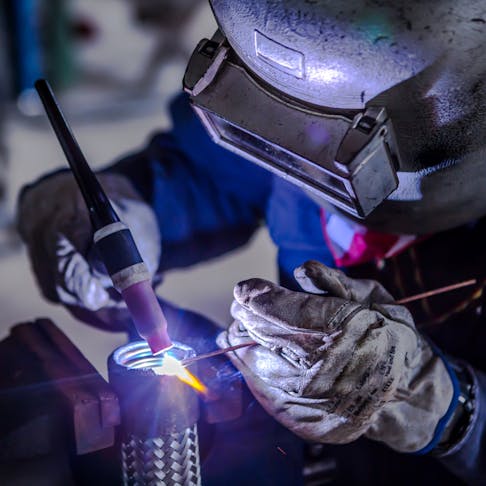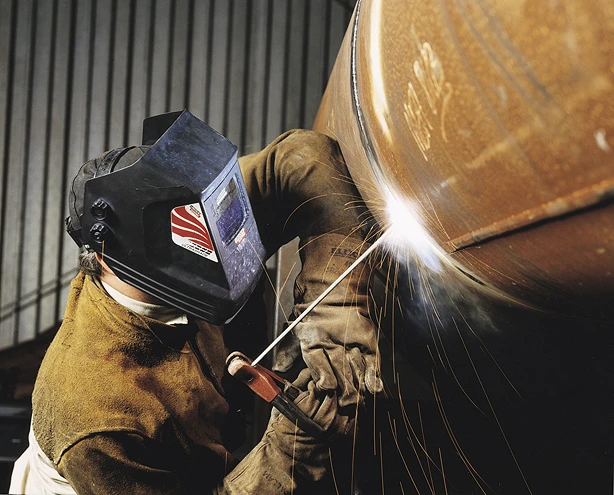The Ultimate Guide to Welding WPS Procedures: An Extensive Review for Welders
In the elaborate globe of welding, Welding Treatment Specifications (WPS) function as the backbone of making sure high quality, uniformity, and safety in welding operations. Recognizing the subtleties of creating, executing, and monitoring WPS treatments is essential for welders looking to raise their craft and meet sector criteria. As we look into the numerous parts of a WPS and explore the intricacies of credentials and certification, we will certainly reveal the essential role these procedures play in the realm of welding. Allow's start a journey to untangle the complexities and significance of WPS procedures in welding practices.
Relevance of WPS Procedures
Comprehending the importance of Welding Treatment Requirements (WPS) procedures is important for ensuring the high quality and stability of welded frameworks. WPS treatments work as a roadmap for welders, outlining the necessary actions, parameters, and products called for to achieve a sound weld. By sticking to WPS standards, welders can guarantee uniformity in their job, resulting in structurally sound and trusted welds.
One of the key reasons why WPS treatments are essential is their function in keeping weld top quality and stability. Complying with the specified welding specifications and strategies laid out in the WPS aids prevent issues such as porosity, cracking, or insufficient fusion, which can jeopardize the toughness and longevity of the weld. In addition, WPS treatments are crucial for making sure conformity with industry standards and codes. By adhering to well established WPS guidelines, welders can demonstrate that their work meets the essential demands for safety and quality, offering guarantee to clients, examiners, and regulatory bodies. Fundamentally, the significance of WPS treatments can not be overemphasized, as they are essential to achieving constant, top notch welds that meet industry requirements and specifications.

Elements of a WPS
A Welding Treatment Spec (WPS) commonly consists of necessary elements that information the details demands for performing a weld, making sure uniformity and quality in the welding process. The vital components of a WPS include necessary variables such as base steels, filler steels, interpass and preheat temperatures, welding processes, shielding gases, welding settings, and post-weld warmth therapy requirements.
Base steels describe the products being joined, while filler metals are used to load the space in between the base steels throughout welding. Preheat and interpass temperature levels are critical for controlling the heat input and preventing concerns like cracking or distortion. The welding procedure details the specific technique to be utilized, whether it's gas metal arc welding (GMAW), protected metal arc welding (SMAW), or another technique. Protecting gases protect the weld swimming pool from climatic contamination. Welding positions specify the alignments in which welding can be performed. Post-weld heat treatment might be essential to soothe stresses and improve the weld's residential properties. A complete understanding of these parts is crucial for developing a effective and thorough WPS.

Certification and Qualification
Having actually established the important components of a Welding Treatment Requirements (WPS), the focus now shifts in the direction of the essential elements of qualification and certification in welding methods.

Qualification, on the other hand, is the official acknowledgment of a welder's qualifications by an appropriate certification body or organization. Welding certifications are normally based on the certain welding processes, products, and positions a welder is qualified to deal with. Holding a legitimate welding qualification demonstrates that a welder meets sector standards and is qualified to perform welding straight from the source jobs to the needed specifications.
Creating a WPS
To create a Welding Procedure Specification (WPS) that fulfills sector criteria, careful factor to consider of welding procedures, materials, and functional parameters is essential (welding WPS). The very first step in creating a WPS is to recognize the welding process to be made use of, such as gas metal arc welding (GMAW) or protected steel arc welding (SMAW) As soon as the welding procedure is established, the following critical aspect is selecting the suitable products, considering factors like base steel type, thickness, and joint style. Operational specifications such as welding existing, voltage, travel rate, and securing gas make-up must additionally be meticulously defined in the WPS.

Applying and Checking WPS
Upon wrapping up the comprehensive Welding Treatment Spec (WPS) that thoroughly information welding processes, materials, operational parameters, and high quality assurance procedures, the focus moves to efficiently executing and keeping track of the established treatments. Application entails ensuring that all welders involved in the project are familiar with the WPS and follow it meticulously during the welding process. Effective application and tracking of the WPS are crucial for guaranteeing the integrity, strength, and safety and security of the welded joints, ultimately adding great site to the overall success of the welding task.
Final Thought
To conclude, understanding and following Welding Procedure Specifications (WPS) is critical for welders to ensure quality, consistency, and safety and security in their job. By knowing the components of a WPS, getting appropriate qualifications and accreditations, developing comprehensive procedures, and carrying out and checking them efficiently, welders can boost their skills and proficiency in welding methods. Complying with WPS treatments is necessary for producing top notch welds and conference market standards.
In the elaborate world of welding, Welding Treatment Specifications (WPS) serve as the backbone of guaranteeing top quality, consistency, and security in welding operations. The welding procedure lays out the specific technique to be made use of, whether it's gas steel arc welding (GMAW), shielded steel arc welding (SMAW), or an additional method.To develop a Welding Treatment Requirements (WPS) that fulfills sector criteria, mindful factor to consider of welding processes, materials, and operational parameters is necessary. The very first action in developing a WPS is to identify the welding procedure to be utilized, such as gas steel arc welding (GMAW) or shielded steel arc welding (SMAW)Upon settling the thorough Welding Procedure Requirements (WPS) that thoroughly details welding procedures, products, operational parameters, and quality assurance steps, the emphasis changes to properly implementing and monitoring the well-known treatments.